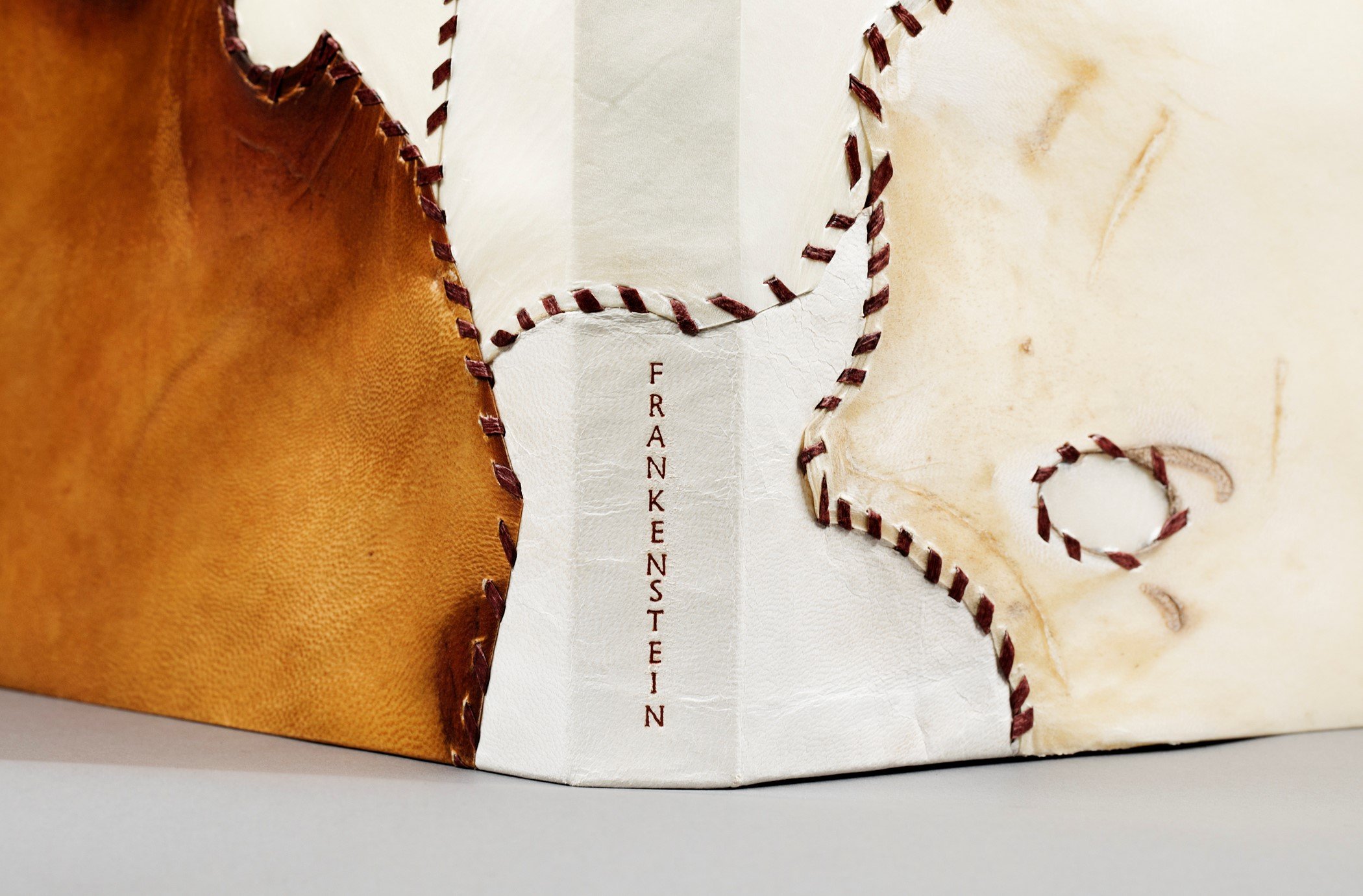Conclusion
"I judge a book by its cover; I judge a book by its shape."
—Alberto Manguel, A History of Reading
Throughout most of book history, the binders of books have remained anonymous and almost entirely silent. And yet, with close observation, a binding can be read for the many clues it offers about the text inside it: where it came from, who made it, who it might be intended for and how it may have been received. Unlike printer’s devices or manuscript colophons, material traces of the identities of bookbinders are few. Binders’ signatures do not appear with any regularity until the nineteenth century, when the distinctive styles of a number of fine binders became recognizable in their own right. For the Guild of Women Binders, one artisans collective, their aim was to ensure a correspondence between the binding and the subject matter of the book, the lasting influence of which can be seen in this exhibition.
Bound by Karen Hanmer
“Thus Strangely Are Our Souls Constructed...”
The quotation from Mary Shelley’s Frankenstein continues: “and by slight ligaments are we bound to prosperity and ruin.” What a beautiful metaphor for a text’s relationship to its binding. Packaged, sometimes humbly, sometimes imperfectly, sometimes nobly and stunningly, books are sent off into the world to find their way...or not, depending on how they are judged, often at the reader’s first encounter with their material embodiment. Like Dr. Frankenstein’s creature, Adam, a noble soul stitched together from that which was dead and discarded, Chicago book artist Karen Hanmer’s patchwork binding cloaks a text of uncommon grace. The novel, begun by Shelley when she was in her late teens and first published in 1818, remains widely read today. This edition, published by Centipede Press, features arresting woodcut illustrations by Lynd Ward. Hanmer’s binding, like Dr. Frankenstein’s creature, complicates the notion of judging a book by its cover.

